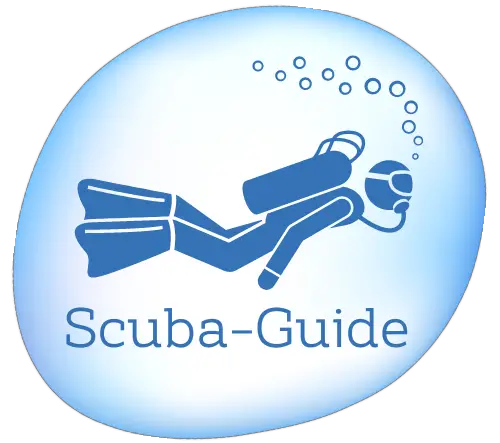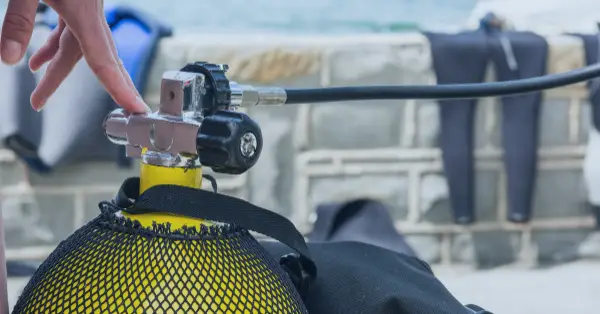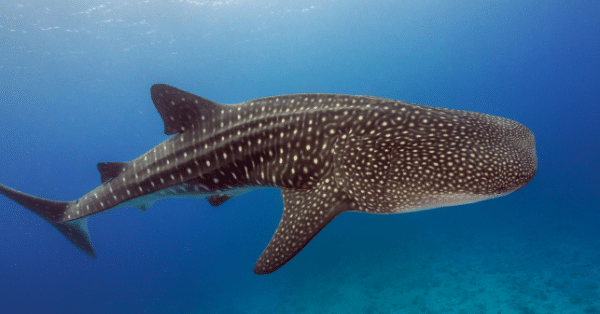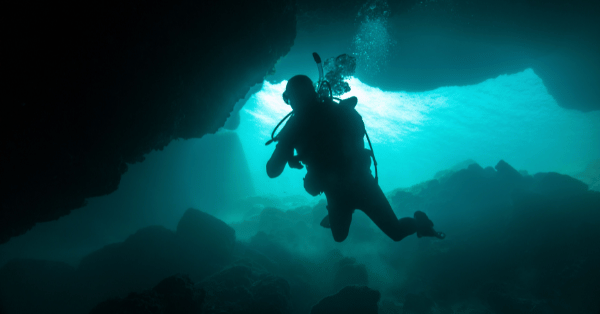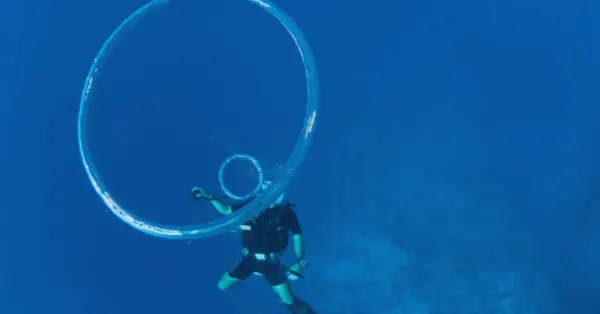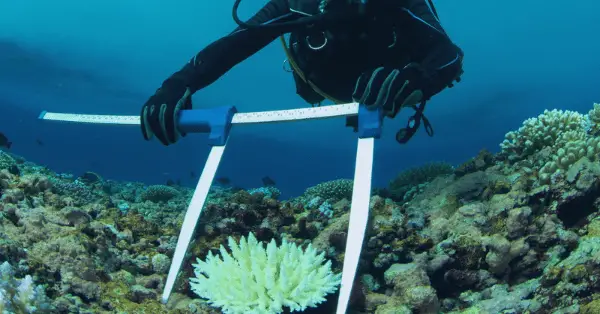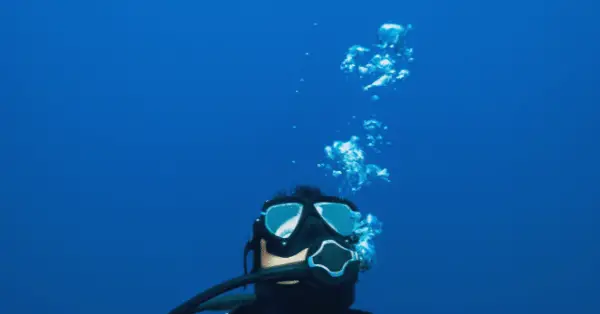The Benefits of Nitrox Diving versus Air (+ dive tables)
Before we begin, we need to understand what we are breathing: Every single breath we take contains both nitrogen and oxygen – making any combination of the two gases technically labeled nitrox. Our atmosphere is usually composed of 79% nitrogen and 21% oxygen.
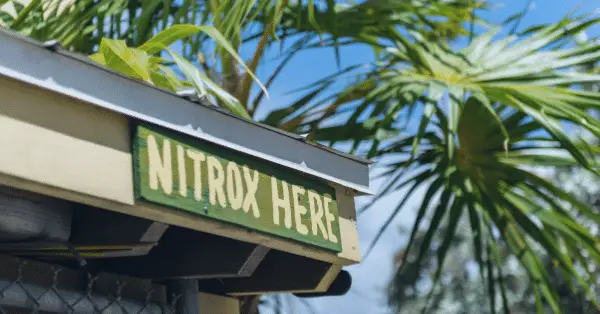
What is nitrox diving?
In the diving world, “nitrox” (also called enriched air nitrox and EANx) normally refers to a breathing gas that is composed of 32-36% oxygen. This higher concentration of oxygen means there is less nitrogen – which has some excellent advantages.
A common scuba tank filled with air has less nitrogen and more oxygen. Similar to the atmospheric air we are breathing every day.
Air tanks versus nitrox diving
The most common gas in a scuba diving tank is the so-called air. Unlike many beliefs, it’s not pure oxygen. In fact, the gas mix is very close to the atmospheric air (78% nitrogen, 21% oxygen, and 1% other trace gases).
While using air for diving is cost-effective and straightforward to use, the presence of nitrogen in it causes nitrogen narcosis. That’s why, when recreational scuba diving with compressed air, you should not exceed a depth of 100 feet (30 meters). Going deeper than 190 feet (58 meters) will cause oxygen toxicity, which can lead to sensory distortions, seizures, and other serious health issues. Therefore, the maximum safe operating depth for air dives must not surpass 218 feet (66.2 meters).
And this is where nitrox comes into play when scuba diving:
Nitrox gas mixes in scuba tanks have reduced nitrogen and therefore more oxygen in them – reducing nitrogen absorption. It is important to understand that nitrogen absorption limits our time and depth when exploring the underwater world. Fortunately, enriched air nitrox opens up remarkable opportunities for divers – allowing you to increase their bottom time, go deeper, and shorten the surface intervals.
The benefits of nitrox diving
As touched on, nitrox diving uses a gas mix with lower nitrogen ratios and therefore higher oxygen percentages.
This provides several benefits, including:
- Extended bottom times (longer dive times)
- Shorter surface intervals – Nitrox divers can remain underwater for longer periods of time and have shorter surfacing intervals. This means more exploration time and less waiting on the surface in between dives due to lower nitrogen absorption.
- Reduced risk of nitrogen narcosis – Less nitrogen in nitrox scuba tanks reduces the risk of nitrogen narcosis – a kind of narcotic effect caused by nitrogen. Nitrogen narcosis can cause confusion, impaired motor skills, and other dangerous effects on divers.
- Extended maximum operating depths – Because of the higher oxygen concentrations in nitrox tanks, they can safely be used at deeper depths without the risk of oxygen toxicity.
- Increased safety margins – Nitrox diving provides a greater margin of safety compared to air diving. This reduced risk of injury or illness in certain areas can make all the difference when it comes to long dives.
Ultimately, nitrox diving offers a safer and more enjoyable experience for divers by allowing them to explore deeper depths and stay underwater for longer periods.
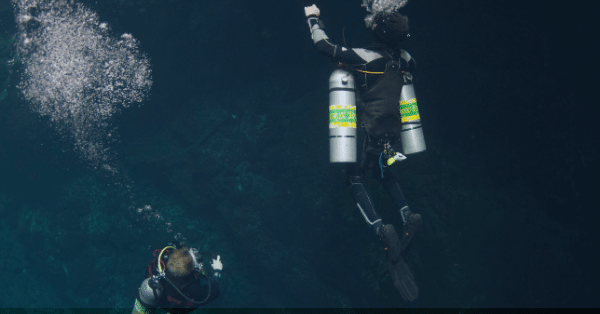
Nitrox dive tables
There are several useful nitrox diving tables. First, we will look at the equivalent depth when diving with enriched air.
Equivalent Air Depth Nitrox Dive Table
The following table shows the Equivalent Air Depth (or EAD) when diving with EAN32 or EAN36 nitrox mixtures.
| Actual Depth | EAD EAN 32 | EAD EAN 36 |
| 40 ft/ 12 m | 30 ft/ 9 m | 26 ft/ 8 m |
| 50 ft/ 15 m | 38 ft/ 11 m | 34 ft/ 10 m |
| 60 ft/ 18 m | 47 ft/ 14 m | 42 ft/ 13 m |
| 70 ft/ 21 m | 56 ft/ 17 m | 50 ft/ 15 m |
| 80 ft/ 24 m | 64 ft/ 19 m | 59 ft/ 18 m |
| 90 ft/ 27 m | 73 ft/ 22 m | 67 ft/ 20 m |
| 100 ft/ 30 m | 81 ft/ 24 m | 75 ft/ 23 m |
That means, for example, when diving with a 32% enriched air mixture at an actual depth level of 100 feet/30 meters, we experience an equivalent depth of 81 feet/ if we were to dive with a regular air mix.
EAD calculation in feet
The formula to calculate the equivalent air depth in feet is as follows: (with N2 being the nitrox percentage. For example, EAN36 = 64% nitrogen)
EAD = (Depth + 33) × (N2 / 0.79) − 33
Example calculation for the EAD of 100 feet with EAN32:
EAD = (100 + 33) × (0.64 / 0.79) − 33
EAD = 75 feet
EAD calculation in meters
EAD = (Depth + 10) × (N2 / 0.79) − 10
Example: 30 meters with EAN32
EAD = (30 + 10) × (0.68 / 0.79) − 10
EAD = 24 meters
Nitrox diving no decompression times table
The following table shows the maximum no decompression dive times per air mix based on the NOAA nitrox dive tables.
Maximum no decompression time in minutes.
| Depth | Air | EAN32 | EAN36 |
| 50 ft/ 15 m | 100 | 200 | 200 |
| 60 ft/ 18 m | 60 | 100 | 100 |
| 70 ft/ 21 m | 50 | 60 | 60 |
| 80 ft/ 24 m | 40 | 50 | 60 |
| 90 ft/ 27 m | 30 | 40 | 50 |
| 100 ft/ 30 m | 25 | 30 | 40 |
Nitrox diving certification course
Nitrox diving requires a specialty certification. It’s often combined with the Advanced Open Water certification.
The Enriched Air (Nitrox) Diver certification course consists of a theoretical part – either through eLearning or at your local dive center – and a practical part. Even though there are no dives required to earn the certification, it’s highly recommended to at least conduct 2 dives with nitrox-enriched air alongside a scuba diving instructor.
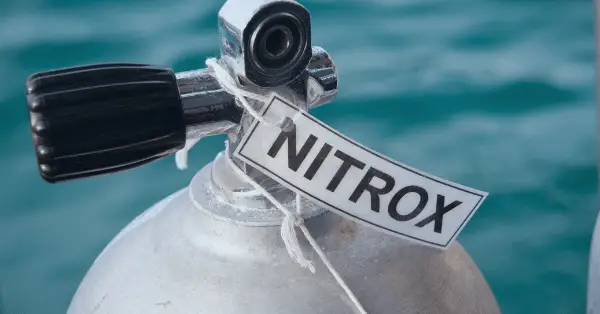
Nitrox diving FAQ
What does EAN32 or EAN36 on scuba tanks mean?
Nitrox mixes are usually labeled EAN32 or EAN36, which means Enriched Air Nitrox and the percentage of nitrogen in the air mix. For example, EAN32 has a 32% nitrogen and 68% oxygen mix.
How much does the nitrox certification course cost?
Prices for the enriched air (nitrox) diver course vary depending on the location and if you choose to add practical practice dives with an instructor. The PADI eLearning course costs $200. Additional training and dives at a local dive center need to be added.
BTW, it’s also a great gift for your dive buddy. Gift them a specialty PADI eLearning course.
Is a nitrox certification worth it?
The enriched air (nitrox) certification is definitely worth it for people who want to extend their bottom time or like to conduct deep dives. It’s almost necessary for people who like to do multiple dives in a short time, like planning a dive trip on a liveaboard dive boat.
